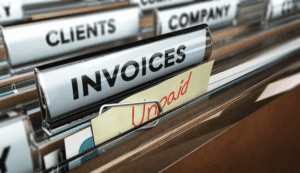Using the equity method, the investor company receiving the dividend records an increase to its cash balance but, meanwhile, reports a decrease in the carrying value of its investment. Other financial activities that affect the value of the investee’s net assets should have the same impact on the value of the investor’s share of investment. The equity method ensures proper reporting on the business situations for the investor and the investee, given the substantive economic relationship they have. Although the investor’s carrying amount reflects its cost, the investee reflects the underlying assets and liabilities at its own historical cost basis.
Zombie reports a net income of $100,000, which is reduced by the $50,000 dividend. At the end of the year, Zombie Corp reports a net income of $100,000 and a dividend of $50,000 to its shareholders. These may include loans, accounts payable, mortgages, deferred revenues, bond issues, warranties, and accrued expenses. The double-entry practice ensures that the accounting equation always remains balanced, meaning that the left side value of the equation will always match the right side value.
IFRS implementation issues — IFRIC update
Apart from the single-line presentation, consolidation rules would apply, so additional questions are raised about the purpose and the nature of the equity method. There is some doubt about the objective equity method of accounting of separate financial statements, as they are not required in International Financial Reporting Standards (IFRS). In general, they are required by local regulations or other financial statement users.
One of the primary investment sources for an organization is an intercompany investment. In other words, a company either invests in or takes control of another company’s operations. Parent Co.’s Cash balance increases, and its Equity Investments decrease, so the changes cancel each other out, and Total Assets stay the same. This example is more complex than real-life scenarios because no companies change their ownership in other companies by this much each year. Over 1.8 million professionals use CFI to learn accounting, financial analysis, modeling and more.
Uncomfortable questions are surfacing about the purpose and the nature of the equity method of accounting. Graham Holt explains
The receipt of the dividend causes the cash balance of the investor to increase. The other side of the entry is not to dividend income but is a credit to the investment account in the balance sheet. On 1 January 20X0, Entity A acquires a 25% stake in Entity B for $150m and applies the equity method.
- At the end of the year, Zombie Corp reports a net income of $100,000 and a dividend of $50,000 to its shareholders.
- Therefore, usually a difference exists between the investor’s carrying amount of an equity method investment and its proportionate share of the investee’s net assets.
- Investees reflect the DTAs and DTLs resulting from temporary differences between the carrying amounts of their pre-tax assets and liabilities and their tax bases in their financial statements.
- The accounting equation helps to assess whether the business transactions carried out by the company are being accurately reflected in its books and accounts.
- This ~3% ownership percentage is much lower than the normal 20% required for the equity method of accounting.
- Founded in 1993, The Motley Fool is a financial services company dedicated to making the world smarter, happier, and richer.
If the investing company proactively creates policies with the investee, we can say that it significantly influences the investee. If the investing company has appointed certain individuals to sit on the board, these members are said to be company representatives. Through them, the investor would be able to take part in key strategic decisions.
Contents
One company can invest in another at any amount, and it is not always considered an acquisition. It is considered an acquisition if a company buys most or all of another company’s shares (50% or more) because the investor has effectively gained control of the investment company. However, an investor company can still exert significant influence even if it owns less than 50% of the investee’s shares. At the end of year 1, XYZ Corp reports a net income of $50,000 and pays $10,000 in dividends to its shareholders. At the time of purchase, ABC Company records a debit in the amount of $200,000 to “Investment in XYZ Corp” (an asset account) and a credit in the same amount to cash. If a business buys raw materials and pays in cash, it will result in an increase in the company’s inventory (an asset) while reducing cash capital (another asset).
As for the upstream transaction, no profits have been realized since no goods have been sold. Therefore, the investor will deduct these unrealized profits from his net income and recognize them once he can sell the goods in stock to a third party. A company’s assets are of two types – those that can be identified and those that cannot. Non-identifiable assets (like goodwill) cannot be measured or valued accurately. Determining the class of intercorporate investments depends more on the degree of strategic control than the percentage of ownership.




